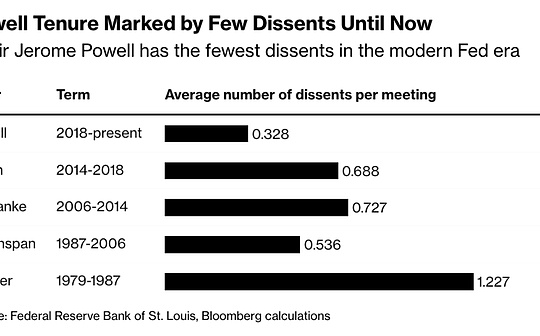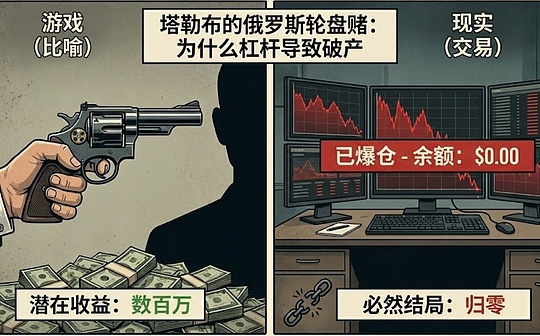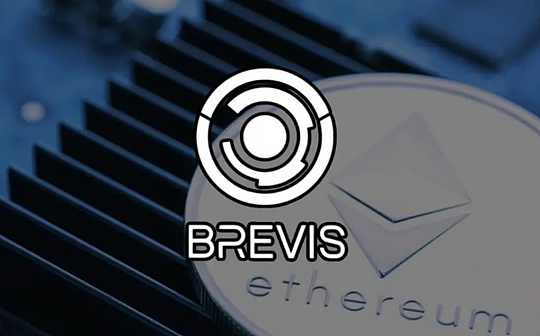
Author: Clow

There is an old saying on Wall Street:When the tide goes out, you realize who is swimming naked.
In November 2025, the tide receded faster than anyone imagined.
The crypto market has lost $1.4 trillion in six weeks, with Bitcoin nearly breaking through $80,000 and Ethereum plummeting more than 40%.But those who are really drowning are not retail investors, but those who were once regarded as “Institutional Bull Market Pioneer“A listed company that hoards currency.
MicroStrategy is facing being kicked out of the MSCI index, and the passive selling of US$11.6 billion is like a hanging sword; Bitmine has a floating loss of US$3.6 billion, falling into a death spiral of “toxic financing”, and the management is willing to “buy one, get two free” in order to survive.
What was once “alchemy” has now become a “meat grinder”.
When the “flywheel” stops spinning, who will be the last survivor?
01disillusionment
In the first half of 2025, the market is immersed in a beautiful illusion:The Federal Reserve will start a radical interest rate cutting cycle, and cheap funds will flood into the market.
Institutional investors are ramping up leverage and betting on a liquidity feast.Bitcoin has exceeded US$100,000, Ethereum has rushed to US$5,000, and the stock price of DAT (Digital Asset Treasury Corporation) has rocketed – you can buy a stock containing US$1 of Bitcoin for US$2, and you still feel like you are getting a bargain.
However, the reality is extremely cruel.
Inflation data is stickier than expected, and the dividends of the “Trump deal” are quickly fading.On October 10, Trump suddenly announced an additional 100% tariff on Chinese goods, which became the last straw to crush the market.
In just a few hours, more than $19 billion in leveraged positions were liquidated.
The crypto market suffered one of the largest liquidation days in history.
The sharp reversal of macro expectations directly led to a cliff-like decline in institutional liquidity.In early November, the trading platform witnessed net outflows of over $3.6 billion.Institutional investors have shifted from “risk embracing” to “risk averse”.
And DAT companies—leveraged crypto exposures that come with operating costs—have borne the brunt of the selloff.
When the underlying asset drops 5%, DAT stock tends to drop 15%-20%.
This non-linear decline triggered a negative feedback loop, and the entire sector’s valuation system collapsed in a short period of time.
Against a backdrop of heightened geopolitical turmoil and fiscal uncertainty, Bitcoin’s “digital gold” narrative has been partially preserved, while Ethereum has been abandoned for a lack of a clear story.
Those DAT companies that bet on the “Ethereum high beta” strategy are experiencing disaster.
02The secret of flywheel
To understand why DAT companies are so fragile, we must first dismantle their money-making logic——The reflexive flywheel.
This model, pioneered by MicroStrategy founder Michael Saylor, is perfect in a bull market:
first step:Company shares trade at a premium (buy a stock containing $1 of Bitcoin for $2);
Step 2:Use premiums to issue new shares at high prices in the secondary market to raise funds;
Step 3:Use the money raised to buy more Bitcoin;
Step 4:Since the shares are sold at a premium, each financing increases the “coin value per share” of existing shareholders;
Step 5:The stock price rises further, maintaining the premium, and the cycle repeats.
This is a money printing machine.
As long as the currency price rises, the stock price rises faster.
Pantera Capital’s report shows that during the “DAT Summer” from 2024 to the first half of 2025, this model made countless followers make a lot of money.Bitmine’s mNAV multiple (the multiple of market capitalization relative to net assets) was once as high as 5.6 times.
This means that investors are willing to spend $5.6 to buy $1 worth of Ethereum exposure.
Crazy?In a bull market, this is called“belief premium“.
But the flywheel has a fatal flaw:It only works in a one-way market.
When the market turns, the premium disappears, mNAV falls below 1.0, and the entire logic is instantly reversed.
At this time, issuing new shares is no longer “value-added”, but “dilution”——For every share sold, existing shareholders’ equity is diluted by one point.The company lost its ability to raise funds and became a “zombie DAT”.
Since there are management fees and operational risks, investors might as well buy ETFs directly.
What’s even more frightening is thatReflexivity will bite back:
Stock price falls → Market questions solvency → Expansion of discount → Loss of financing ability → Liquidity depleted → Forced to sell assets
In November 2025, this death spiral is in full swing in the DAT sector.
The flywheel becomes a meat grinder.
03The $11.6 billion Sword of Damocles
Of all risks, the most systemically damaging are:MicroStrategy may be removed from the MSCI index.
MSCI, the world’s leading index provider, has launched a consultation to consider removing companies with crypto assets accounting for more than 50% of their balance sheets from the index.
The reason is simple:These companies behave more like investment funds than traditional operating businesses and do not meet the definition of broad market equity benchmarks.
The final decision will be made atJanuary 15, 2026Announce.
But the market is already pricing in this tail risk in advance.
The consequences would be catastrophic.
According to JPMorgan Chase’s calculations, if MSCI excludes MicroStrategy, funds tracking the index alone will generate direct outflows of approximately US$2.8 billion.But if other index providers such as S&P and FTSE follow suit in order to maintain methodological consistency,The total size of the forced selling could be as high as $11.6 billion.
This is not the rational judgment of active investors, but the mechanical selling of passive funds.
They must sell, no matter how low the price.
In a market where liquidity has dried up, $11.6 billion of selling pressure is enough to trigger a “Davis Double”:
-
Falling Bitcoin price causes NAV to shrink
-
Index removals cause valuation multiples to plummet
If MSTR’s stock price falls below $150 and loses its index premium, its flywheel will be completely reversed – it will be unable to raise funds to buy coins, and the currency price may continue to fall, forming a perfect death spiral.
This will turn MicroStrategy from the “biggest buyer” in the Bitcoin market to a helpless bystander or even a potential seller in extreme cases.
The market finally realized that DAT Company was not a “diamond hand” based on faith, but a “forced hand” subject to financial statements.
04The price of Ethereum’s big gamble: $3.6 billion in floating losses
If MicroStrategy faces regulatory risks, thenBitmine bets itself to death.
Bitmine’s strategy is extremely aggressive:Trying to become the “Ethereum version of MicroStrategy”.
Its investment logic is,Ethereum is more volatile than Bitcoin and generates staking returns, so it should provide outsized returns in a bull market.
Based on this logic, Bitmine borrowed heavily and accumulated more than 3.6 million ETH.
But the reality is extremely cruel.
Ethereum does not have the “digital gold” consensus of Bitcoin. During market downturns, high volatility becomes a double-edged sword.
Most of Bitmine’s positions were opened at an average price high of $4,000, while Ethereum struggled below $3,000.
Paper losses have exceeded $3.6 billion.
What’s more deadly is,Bitmine has “invested almost all of its cash” and has no remaining funds to cover positions at a low level.It becomes a giant stuck long that can only pray for a market reversal.
Evidence of desperation comes from its September 2025 funding round.Bitmine sold 5.22 million shares at a price of $70 per share, and also included two warrants per share with an exercise price of $87.50, for a total of 10.4 million warrants.
This “buy one, get two free” structure is known in the financial world as“Toxic Financing”,It’s a sign of company desperation.
-
Block upside potential:10.4 million warrants have built a huge “selling pressure wall” at $87.50, which will be suppressed once it rebounds to this point.
-
devastating dilution:If all warrants are exercised, more than 15 million new shares will be created, resulting in an immediate dilution of 7.26% for existing shareholders.
-
Confidence collapsed:The market interpreted this as management sacrificing long-term value in order to survive.
After this transaction was announced, Bitmine’s mNAV premium rate quickly collapsed from 5.6 times to 1.2 times, with the lowest falling to 0.86.
The flywheel becomes a dilution machine.
05Judgment Day: January 15, 2026
All investors have their eyes fixed on one date:January 15, 2026.
MSCI will announce the final decision.
This is not only an index adjustment announcement, but also a judgment day for the DAT sector.
-
pessimistic scenario
If MSCI decides to eliminate, a massive passive fund sell-off will occur in February 2026.
Stocks such as MicroStrategy may face instant repricing of 30%-50%, and the entire DAT sector will enter an ice age.
Even more frightening is the contagion effect.
Once MicroStrategy is eliminated, other index providers are likely to follow, triggering a domino effect.Those DAT companies that rely heavily on index funds will face the risk of liquidity drying up.
-
optimistic scenario
If MSCI retains these companies or only restricts the weightings, the market will usher in a huge “short squeeze” market.
Short positions previously established to hedge risks will have to be liquidated, potentially triggering a short-term violent rally.
But even if it escapes this disaster, it will be difficult for the DAT sector to return to its past glory moments.
The existence of spot ETFs has permanently compressed the valuation premium space of DAT.
-
The last straw
The only variable comes from the policy level.
The U.S. Senate plans to mark the Crypto Market Structure Act in December 2025 and strive to submit it to the president for signature in early 2026.
The core goal of this bill is to clarify the jurisdictional boundaries of the CFTC and SEC and define through legislation which digital assets are “digital commodities.”
If passed, the bill would give Bitcoin and Ethereum clear legal status.
This will be DAT’s most powerful weapon against MSCI’s elimination decision.
If the law recognizes these assets as legitimate corporate reserve assets, it will be difficult for index providers to exclude them on the grounds of “unclear nature.”
This is the only chance for a comeback for the DAT sector.
But until the results are clear, everything is unknown.
The market is waiting with bated breath for the outcome of this gamble to be revealed in two months.
06Summary
The DAT model is not dead, but it is undergoing a dramatic species evolution.
The “coin hoarders” of 2024 are being eliminated and will be replaced by the “capital operators” who understand capital allocation, risk management, and regulatory gaming in 2026.
The so-called “flywheel” is never a perpetual motion machine, but a sail that opens when the wind is favorable.
If the sail is not furled in time during a storm, the entire ship will capsize.
The market has taught everyone a lesson at a cost of US$1.4 trillion:
In the crypto world, staying alive is everything.
Only those players who are still standing on the ruins are qualified to welcome the next cycle.
Only investors who understand this shift will survive.







